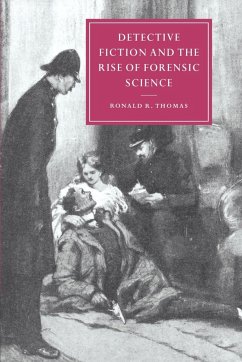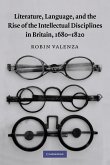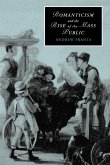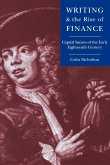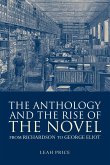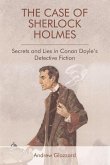The relationship between the development of forensic science and the new literary genre of detective fiction in Britain and America.
This is a book about the relationship between the development of forensic science in the nineteenth century and the invention of the new literary genre of detective fiction in Britain and America. Ronald R. Thomas examines the criminal body as a site of interpretation and enforcement in a wide range of fictional examples, from Poe, Dickens and Hawthorne through Twain and Conan Doyle to Hammett, Chandler and Christie. He is especially concerned with the authority the literary detective manages to secure through the 'devices' - fingerprinting, photography, lie detectors - with which he discovers the truth and establishes his expertise, and the way in which those devices relate to broader questions of cultural authority at decisive moments in the history of the genre. This is an interdisciplinary project, framing readings of literary texts with an analysis of contemporaneous developments in criminology, the rules of evidence, and modern scientific accounts of identity.
Table of content:
1. The devices of truth; Part I. Tell-Tale Hearts: 2. The lie detector and the thinking machine; 3. The unequal voice in 'The Murders in the Rue Morgue'; 4. The letter of the law in The Woman in White; 5. The criminal type in 'A Case of Identity'; 6. The voice of America in Red Harvest; Part II. Arresting Shots: 7. The mug shot and the magnifying glass; 8. Photographic memories in Bleak House; 9. Double exposure in The House of the Seven Gables; 10. Negative images in 'A Scandal in Bohemia'; 11. Empty cameras in The Big Sleep and Farewell My Lovely; Part III. Identifying Marks: 12. The fingerprint and the map of crime; 13. Foreign bodies in A Study in Scarlet and The Sign of Four; 14. Accusing hands in Puddn'head Wilson; 15. International plots in The Maltese Falcon and Murder on the Orient Express; 16. Missing persons and secret agents; Selected works for further reading.
This is a book about the relationship between the development of forensic science in the nineteenth century and the invention of the new literary genre of detective fiction in Britain and America. Ronald R. Thomas examines the criminal body as a site of interpretation and enforcement in a wide range of fictional examples, from Poe, Dickens and Hawthorne through Twain and Conan Doyle to Hammett, Chandler and Christie. He is especially concerned with the authority the literary detective manages to secure through the 'devices' - fingerprinting, photography, lie detectors - with which he discovers the truth and establishes his expertise, and the way in which those devices relate to broader questions of cultural authority at decisive moments in the history of the genre. This is an interdisciplinary project, framing readings of literary texts with an analysis of contemporaneous developments in criminology, the rules of evidence, and modern scientific accounts of identity.
Table of content:
1. The devices of truth; Part I. Tell-Tale Hearts: 2. The lie detector and the thinking machine; 3. The unequal voice in 'The Murders in the Rue Morgue'; 4. The letter of the law in The Woman in White; 5. The criminal type in 'A Case of Identity'; 6. The voice of America in Red Harvest; Part II. Arresting Shots: 7. The mug shot and the magnifying glass; 8. Photographic memories in Bleak House; 9. Double exposure in The House of the Seven Gables; 10. Negative images in 'A Scandal in Bohemia'; 11. Empty cameras in The Big Sleep and Farewell My Lovely; Part III. Identifying Marks: 12. The fingerprint and the map of crime; 13. Foreign bodies in A Study in Scarlet and The Sign of Four; 14. Accusing hands in Puddn'head Wilson; 15. International plots in The Maltese Falcon and Murder on the Orient Express; 16. Missing persons and secret agents; Selected works for further reading.

